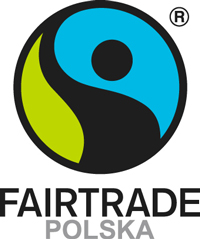Clean Bug?
The River Bug is the fourth largest river in Poland with respect to length, and it lies in the Baltic drainage basin. The source of the river is in the Ukraine (Wyżyna Podolska) at a height of 310 meters above sea level. It flows between Wyż. Lubelska and Wyż. Wolyńska, then through the Polesie Zachodnie. On the stretch between Gołębie and Niemirów (363 km), the river forms the border between the Ukraine and Belorussia. In the vicinity of Terespol the river bears westward and flows through the Nizina Podlaska and Mazowiecka. The total length of the river is 772 km, of which 587 km (the navigable portion) is found within Poland.
The average volume flow of the river is 158 m3/sec. The area of the drainage basin that feeds the Bug in Poland is 19,284 km2, which constitutes half of the total area of the Bug's drainage basin (39420 km2). The main tributaries are the Krzna, the Nurzec, the Liwiec rivers, as well as the Pełtew, Sołokija, Ług, Huczwa, Muchawiec and LePna rivers. The Bug is joined with the Prypeć River which is a canal formed on the Dniepr-Bug stretch by the Muchawiec and Pina rivers. In 1961 the canal section between Wieprz and (southern) Krzna was opened and runs for a length of 140 km. The main towns found on the Bug are Włodawa, Drohiczyn, and Wyszków.
The level of pollution in the Bug is monitored over a stretch of 570 kilometers (out of the 587 km which is found in Poland). The waters in this stretch are quite polluted. The last published research into this matter dates from 1991 and can be found in the yearly statistical bulletin for the year 1991. According to physio-chemical criteria, 48.1% of the river could be regarded as being third class, while 51.9% has been identified as being beyond classification. Out of the 49 main rivers in Poland, only two, the Bug and Przemsza rivers, do not have water that can be regarded as falling into Classes I and II. The latter has its source in Poland while the Bug is only measured within the boundaries of Poland and already suffers from high levels of pollution when it enters the country.
According to biological criteria, 7.4% of Polish rivers are of class III, while 92.6% are beyond classification. These criteria were established in 1984 and represent the change in the composition and levels of E. coli bacteria as measured between 1984 -1989. Out of 28 tributaries of the Vistula River, the Bug ranked 22nd with regard to purity of the water.
Half the water delivered by the Bug that is used for economic purposes is absorbed by the Agricultural and Forestry industries, one third for irrigation, and one sixth for industrial purposes. Within the water basin the largest volume of water is used by Chełm -- 8.6 hm3, of which 6.4 out of 6.5 hm3 are returned in a cleaner state. The next town is Siedlce, which uses 7.4 hm3, and out of the 7.1 hm3 which is returned to the river, 5 hm3 is biologically purified.
Within the water table lie 24 towns which are served by 18 water purification plants (16 biological and 2 mechanical). Users flush 39 hm3 of water, of which 35.8 hm3 are processed -- 4.7 hm3 mechanically and 30.8 hm3 biologically. The majority of water which is not processed is sewage.
to be continued in the next issue






 Wydawnictwo „Zielone Brygady” - dobre z natury. Niektóre prawa zastrzeżone.
Wydawnictwo „Zielone Brygady” - dobre z natury. Niektóre prawa zastrzeżone.